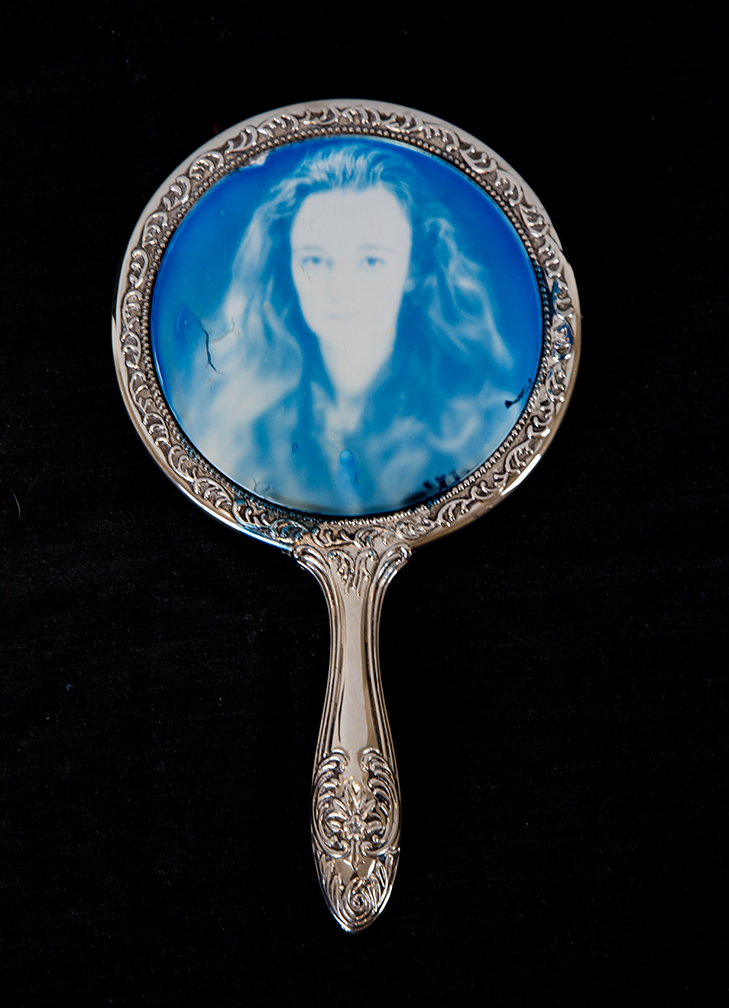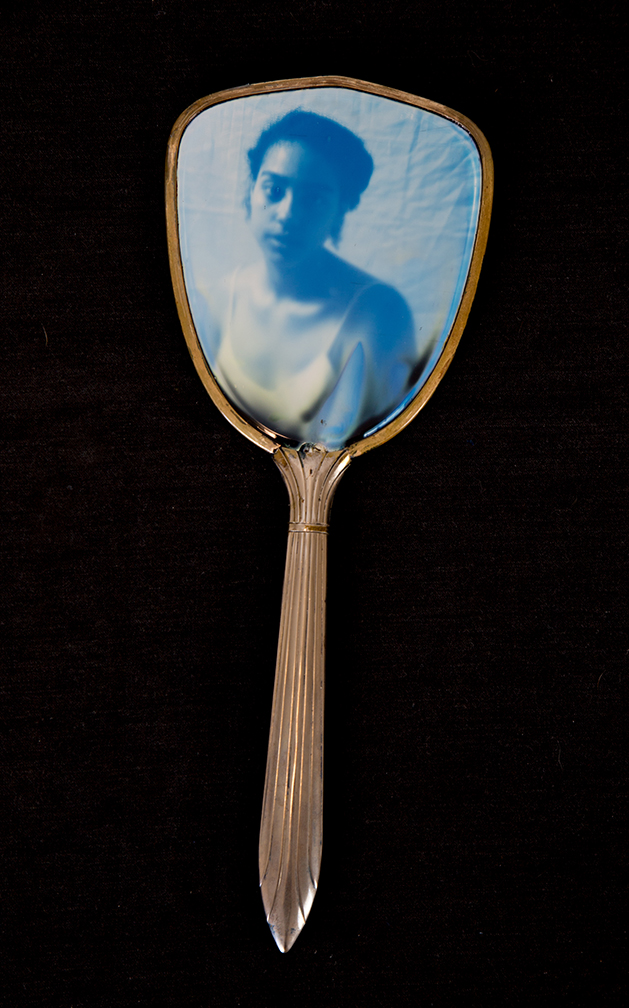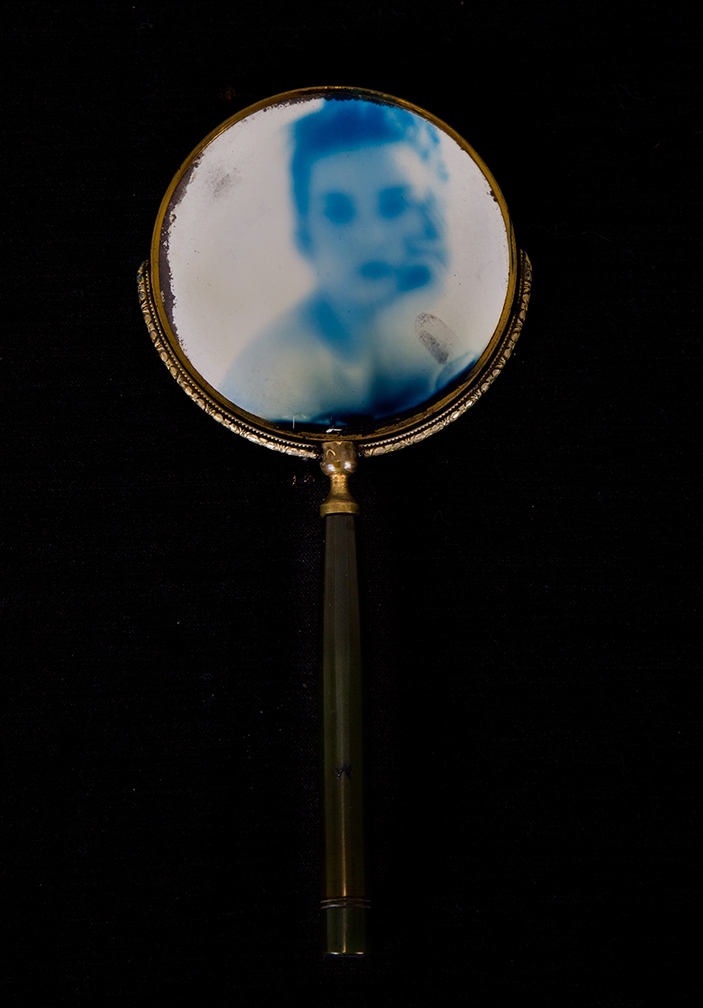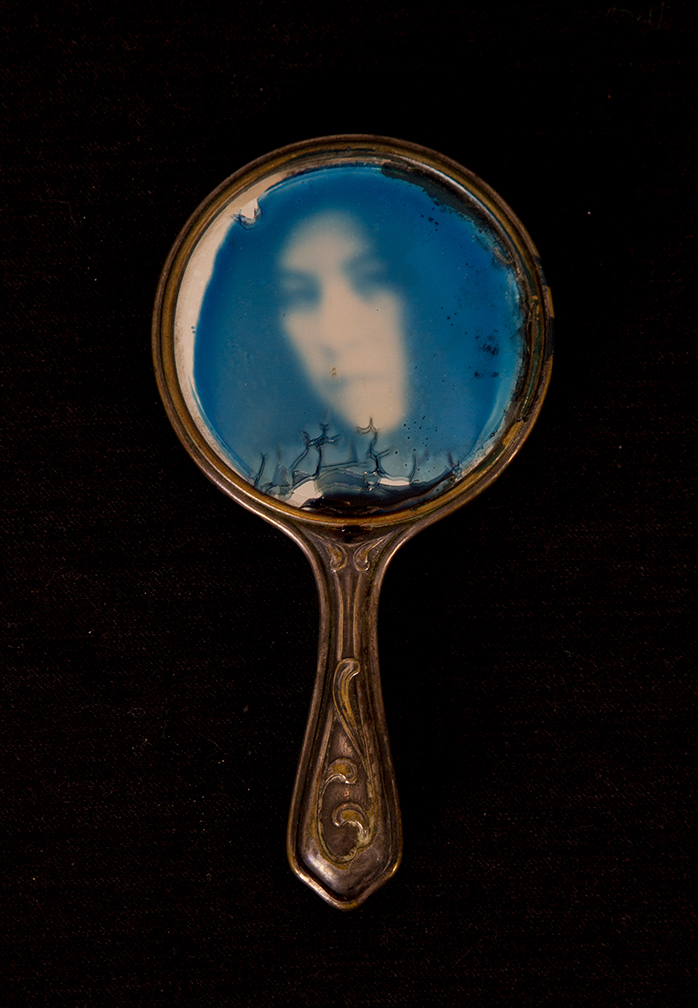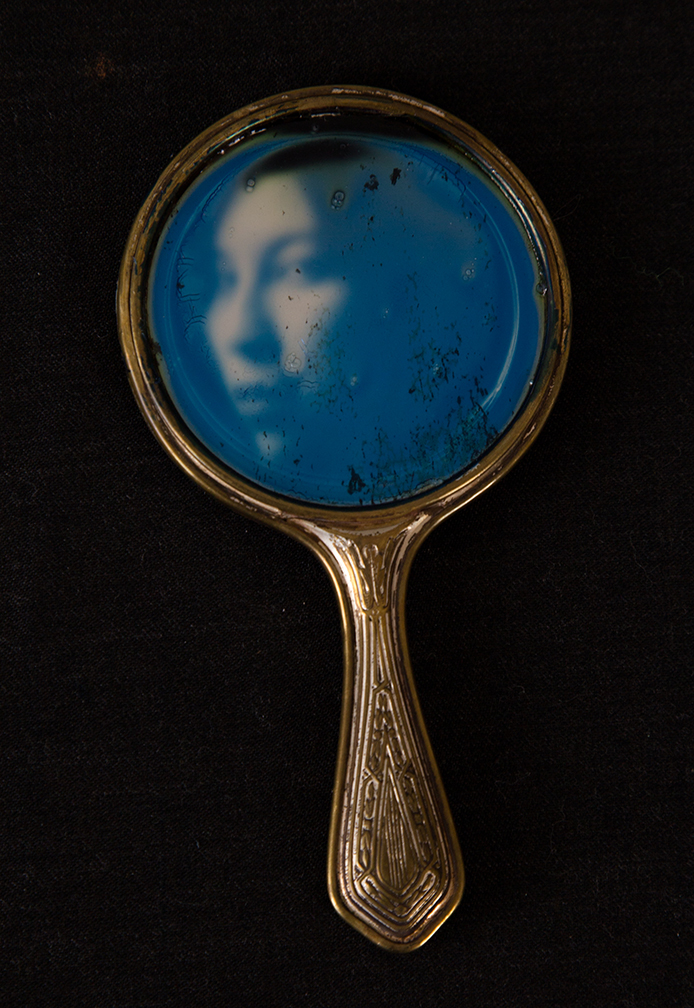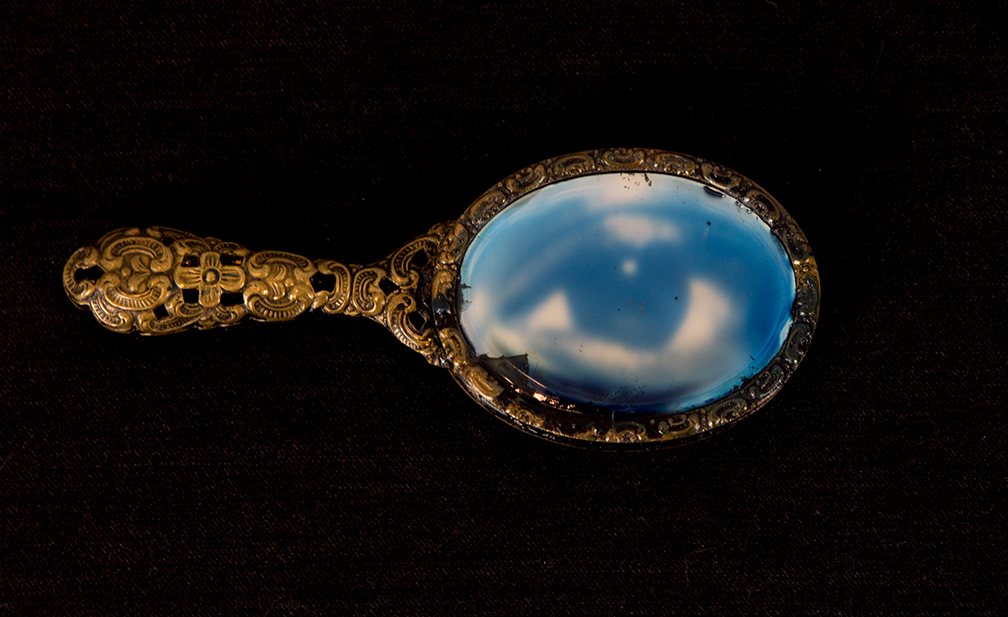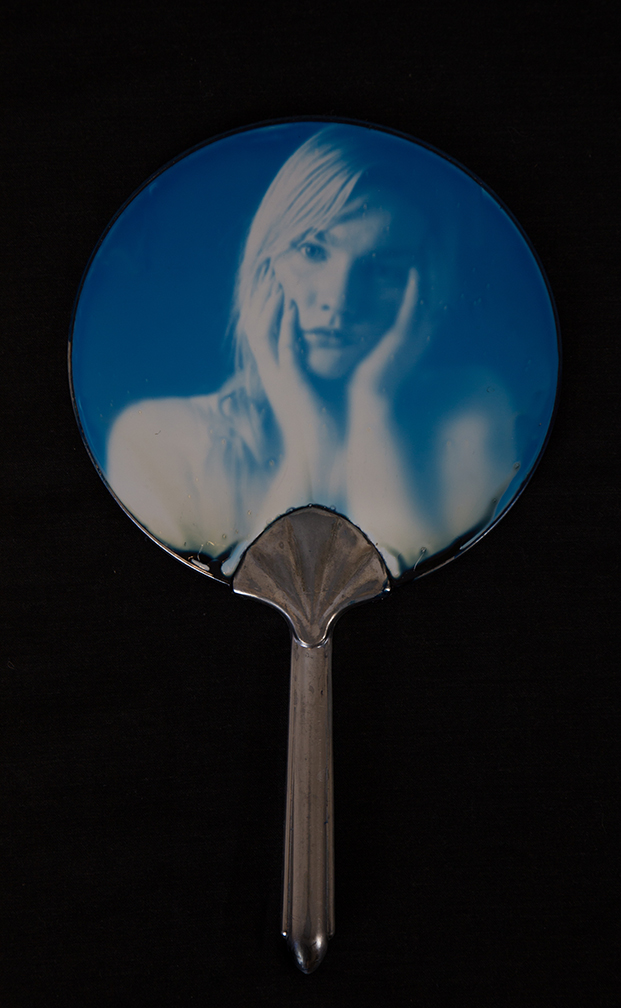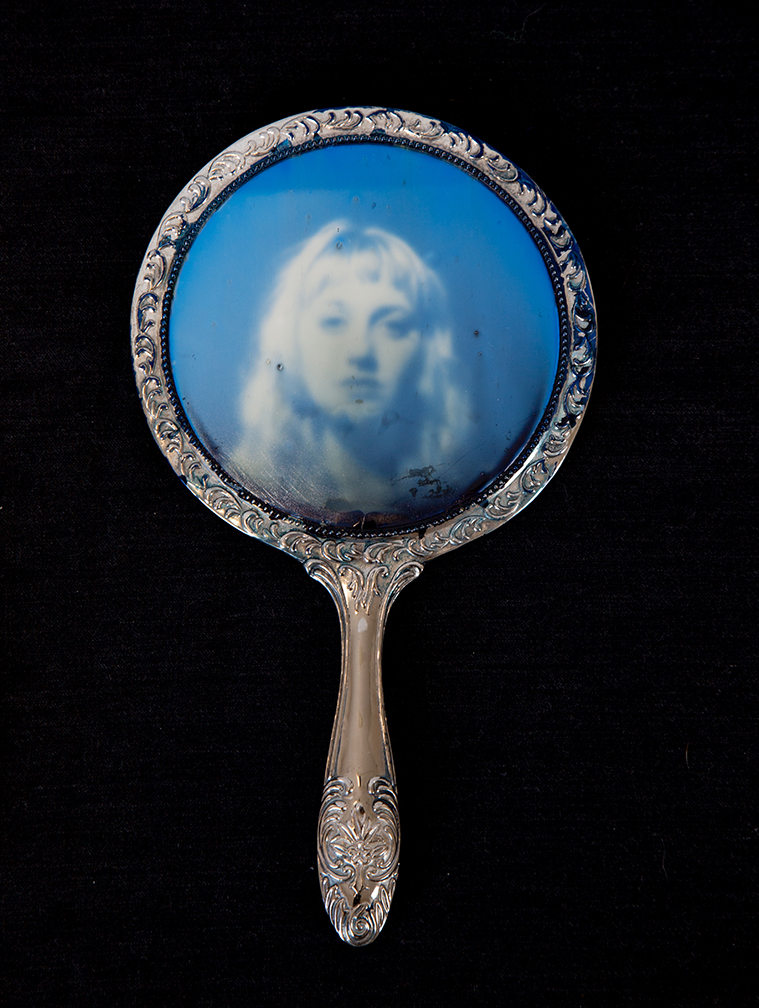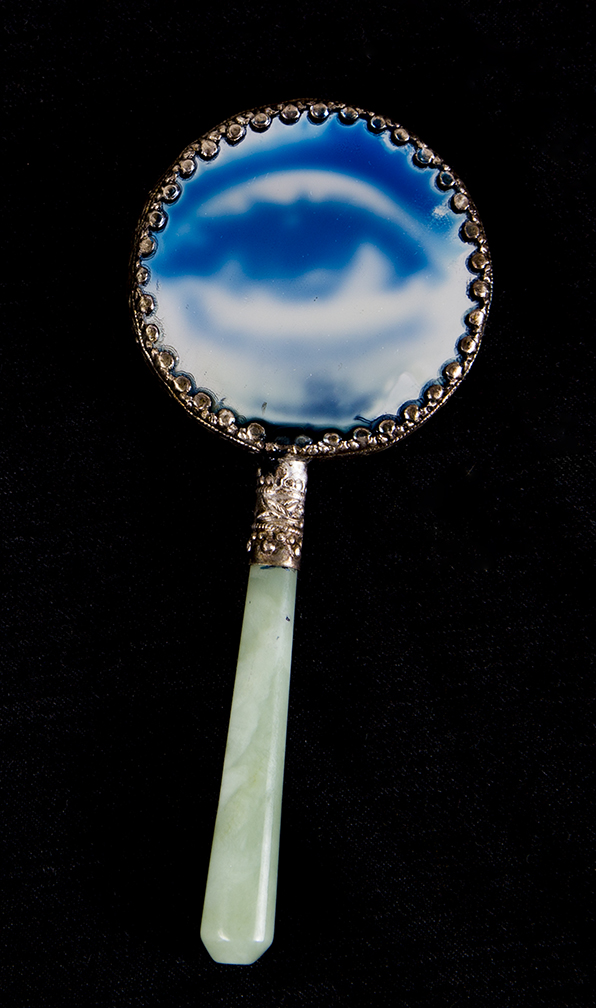The Human Experience Through Alternative Processes: Samantha Metzner
“One way or another, we all have to find what best fosters the flowering of our humanity in this contemporary life, and dedicate ourselves to that.” – Joseph Campbell
An idea I have constantly grappled with is the idea of humanity. How is it each human being experiences similar events yet each of us is entirely unique? Due to my curiosity about how others perceive this question, I have interviewed artists that use particular photographic processes to dissect the idea of what it means to be human.
The idea of intimacy is an entirely human concept that Samantha Metzner focuses on in her powerful cyanotypes from her project, Reflections. Utilizing handheld mirrors Metzner explores the idea of our identity and how our perceptions of ourselves are not our true reflections.
Samantha Metzner is an artist and photographer currently based in Moab, UT. She specializes in historic and alternative printing processes such as cyanotypes and vandykes as well as mixed media pieces.
Most of her current work revolves around the exploration of landscapes in Southeast Utah and the interactions that happen within them. Samantha received her Bachelors of Art in Photography from Guilford College in 2015 and most recently has been selected as the 2022 Community Artist in the Parks for the Southeast Utah group of parks. She is the second photographer ever to be selected.
Follow Samantha Metzner on Instagram: @samantha.jade.art
Reflections
Intimacy is a deep human need manifesting not only in our relationships with others but also in the private space of our own minds. Becoming intimate with oneself involves escaping the notion of a fixed self and constructing meaning based instead on a malleability of the self. This self is highly dynamic, allowing certain truths to exist over a period of time yet also deconstructing the same truths.
My body of work seeks to explore the mystery of such interactions with the self and the intimate (personal) constructions of meaning which follow. By using mirrors as objects to hold my cyanotypes, I aim to make such interactions more fully realized in an embodied experience, one that brings up questions of conceptualizing about the self in all its complexity. For me, the mirror is inherently an intimate object. It is designed to bring one closer to the self by reflecting the truth, but is in fact fundamentally flawed: there are no true reflections—a mirrored image is always reversed, for example—just as there is no fixed self. -Samantha Metzner
Kassandra Eller: How did your photographic journey start?
Samantha Metzner: My photographic journey started when I was very young. My mom was a photographer growing up and she constantly had my sister and I modeling for various projects. There were always photography books laying around and Sally Mann’s book of portraits was a favorite one for me to page through as a kid. She is such an adept visual storyteller… I was always fascinated by the family narratives she told. I got my first camera when I was maybe 12 but when I was even younger would help my mom hand color silver gelatin prints. Fast forward to college…I thought I was going to be an English lit major but took my first photo class sophomore year. Photo 1 was film. It was a pre-req to learn how to do everything manually. And, we used caffenol (an alternative-process developer) instead of traditional black and white chemistry. From there, you could choose to carry on with film or create your own syllabus. I decided to stick with film and then later dive into historic processes and more alt process work.
KE: How did you discover alternative process photography? What made you want to experiment with this?
SM: My photo professor throughout college made us all start with film and caffenol. That was my first alt process love because I started to discover how experimental you can get with it. I started heating up the developer to brush on to my silver gelatin print, versus traditional tray developing, and started “caffenol painting” on my prints… creating a really unique and subtle effect by brushing the developer on at a higher temp to more quickly develop the print that would almost add a soft vignette appearance to the overall image. We also did a cyanotype workshop one day in class and I was hooked! I loved the freedom of once again experimenting with the overall composition by how you brushed the chemistry on.
KE: Is there anything or anyone who inspires you?
SM: Definitely my mom because she’s responsible for so much of my early inspiration and photographic knowledge. Also, my college photo professor, Maia Dery because she pushed me so hard in the best possible ways to help unearth my creativity and technical capabilities. Whenever I fall into a creative lull, thinking about my undergrad work under the guidance of Maia and how much I pushed myself helps me move past self criticism and doubt with my current projects and helps me hold myself to a higher standard of work. I also mentioned Sally Mann above…I continued to study her work while in college and I think she’s definitely played a huge influence in how I think about identity and how that ties in to my work.
KE: Alternative process photography allows the artist’s hand to be present in the work. For this project why did you choose this alternative process method and how does your interaction in creating the images affect the meaning of the work?
SM: So this project basically started with the idea to print on glass or mirrors. At first it was really all about the process of figuring out how to get cyanotype chemistry to stick to mirrors and then the conceptual work came later but it does feel really fitting that the whole series is about intimacy and I spent hours and hours experimenting and getting familiar with the how cyanotype chemistry and photo grade gelatin work to create a liquid emulsion that later hardens onto the mirrors….you could say I also became very intimate with my own emotions, exhaustion, patience and creativity to make this project work so I really think it was also a lesson in tuning in to myself to push through. And I think this interaction of myself in the process also can be interesting because throughout it all the mirrors were reflecting back the process, the late nights, and the problem solving and it was almost like I was constantly observing myself making this project through the mirrors.
KE: How do you handle mistakes when using alternative processes? Are there times when an error turns into a piece?
SM: I think this is a great question because mistakes are absolutely inevitable when working with alternative processes. I try and handle them with grace and curiosity…and figure out the whys and how’s of the mistake. Using mistakes as learning opportunities can go a very long way to not only further your understanding of the process you’re working with but also perhaps add to the work. An example that comes to mind is when I was working on the reflections series. I worked on a way to get the cyanotype chemistry to stick to mirrors to then be able to print directly onto the mirrors. This took me months of work..I sometimes stayed in my studio until 3 in the morning working. Sometimes I would get what I would call a successful print, the emulsion was smooth and not lifting off the surface of the mirror. But when it would dry it would sometimes start to crack off. In some cases, this totally changed the aesthetic of the piece and worked beautifully with the images and the mirrors because it added to the timeless feeling I was going after. Sometimes however the emulsion would lift and crack too much and I’d have to start over.
KE: Humanity encompasses a vast array of emotions, actions, ideas, and thoughts. How would you describe your work in terms of the human experience?
SM: This is a really good question. I think a lot of my work comes from my experience alone as a human and exploring how my identity and ideas about the world shift over time or how some stays the same…and perhaps how there are some universal truths about the human experience especially in terms of how fluid it can be and how we all can get so caught up in our own little world without sometimes acknowledge the truths of others.
KE: I love how in your statement you say “there are no true reflections”. Can you elaborate on the idea of the perception of ourselves and how it is important to this body of work?
SM: A phrase I came up with to explain this a bit is “a mirrored image is always reversed,” meaning that the perceptions we have of ourselves are perhaps always a bit skewed because of our internal biases and experiences that may add to this bias, unless we work really hard to see clearly. This comes a lot from yogic philosophy and Buddhist ideas of “avidya” which basically means a delusion or misunderstanding of the nature reality. So when we look at ourselves in a mirror, we aren’t seeing what other people see. We are not seeing reality as it is…we are seeing it from our perspective alone and that can be perhaps harmful when we take that perspective to the world and base all our truths on it.
KE: I notice that each mirror used is unique, there seem to be no repeats of the same mirror. How did you go about collecting and selecting the mirrors for each portrait? Were there certain details about a mirror that you felt fit a certain image better than another? I also notice that all the mirrors are handheld mirrors. Would you discuss the importance of this choice in your work?
SM: All of the mirrors are sourced from eBay, craigslist, or estate sales. I spent a long time building up my collection and especially loved the handheld aspect because it fits perfectly with this theme of intimacy and identity and the idea was to be able to hold the mirror, see yourself, and also see this print of another identity…kind of showcasing connections, overlaps and differences in realities and identities.
KE: The way you embody this idea of the mirror as an intimate object adds such meaning to this work. Are there any other objects that you would consider to be intimate in this way? Would you want to incorporate different objects into this work?
SM: Yes that’s a really good question. I think it depends. There’s always objects in our lives we affix deep and intimate meaning to…whether it’s a grandmothers ring that was passed down through the family or your favorite pair of boots that make you feel like you when you wear them…I think the mirror stands alone though because as an object it was specifically made to show us ourselves. I don’t think I would want to incorporate other objects into this work at the moment but it would be interesting to toy with that in the future and see what comes up!
KE: In these photographs, you appear to have several different subjects. Would you discuss your thoughts on the subjects you chose to feature in this project?
SM: So a lot of the subjects are people I was friends with in college while working on this project. I felt like I only wanted to photograph people I was familiar with because it definitely changes the meaning when you photograph strangers. I also included a couple self portraits in there because being able to delve in and truly examine the self and reflect back on what is there, including the light and darkness, is one of the most intimate things you can do, I think.
KE: To conclude I would like to ask what is next for you. Is there anything you are currently working on?
SM: I actually am just finishing up a 7 month long Artist residency with the southeast Utah group of parks…this was a big deviation from my past work because it involved landscapes instead of portrait work but I think still continued along with the theme of identity because I began to really explore my connection to the landscapes and those ensuing emotions. Next up I’d like to explore more portrait work and do some big projects with vandyke prints, which I’ve been working with regularly. I have also be lusting after the tintype process and would absolutely love to get into that!
Posts on Lenscratch may not be reproduced without the permission of the Lenscratch staff and the photographer.
Recommended
-
Ragne Kristine Sigmond: Portraits of Painterly LightDecember 2nd, 2025
-
Mary Pat Reeve: Illuminating the NightDecember 1st, 2025
-
Ricardo Miguel Hernández: When the memory turns to dust and Beyond PainNovember 28th, 2025
-
Pamela Landau Connolly: Columbus DriveNovember 26th, 2025
-
MATERNAL LEGACIES: OUR MOTHERS OURSELVES EXHIBITIONNovember 20th, 2025

